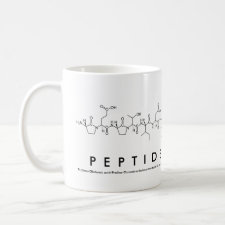
Authors: Schirmer C, Meisel H
Article Title: Synthesis and Evaluation of Molecularly Imprinted Polymers (MIP) with Affinity for the Polypeptide Nisin.
Publication date: 2009
Journal: Food Analytical Methods
Volume: 2
Issue: (4)
Page numbers: 257-263.
DOI: 10.1007/s12161-008-9061-0
Abstract: Abstract: The method of hierarchical imprinting was used for the first time in order to synthesize polymers with a high affinity for nisin. The concept of this approach is demonstrated by filling the pores of silica particles, which contain immobilized peptidic templates, with a mixture of monomers/initiator, followed by polymerization and subsequent dissolution of the silica template. This method leaves imprinted polymers with binding sites located at the surface that are capable of recognizing larger molecules with the same immobilized epitope. The results of the high-performance liquid chromatography analyses illustrate that the highest retention factors and imprinting factors of nisin on nisin C-terminal analogously imprinted polymers could be obtained with acetonitrile/water mixtures containing more than 80% water. Furthermore, nisin was strongly retained on polymers that were imprinted with a longer amino acid sequence because of better sterical accessibility of the binding sites for the C terminus of nisin. The retention of nisin (k?=?21.65) under aqueous elution conditions results from selective ionic interactions and hydrophobic interactions. Furthermore, the polymers exhibited selectivity for the template Lys-Ala and the structurally related dipeptide Ala-Lys. The results of the present work show that these hierarchically imprinted polymers could be used for the chromatographic separation of the polypeptide nisin in aqueous solutions
Template and target information: nisin, peptide, Lys-Ala, Ala-Lys
Author keywords: molecularly imprinted polymer, hierarchical imprinting, Nisin, peptide detection, liquid chromatography



Join the Society for Molecular Imprinting

New items RSS feed
Sign-up for e-mail updates:
Choose between receiving an occasional newsletter or more frequent e-mail alerts.
Click here to go to the sign-up page.
Is your name elemental or peptidic? Enter your name and find out by clicking either of the buttons below!
Other products you may like:
 MIPdatabase
MIPdatabase









